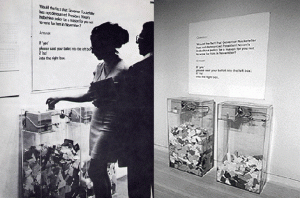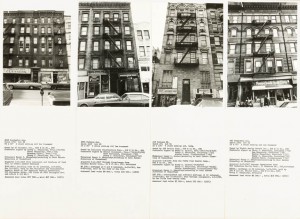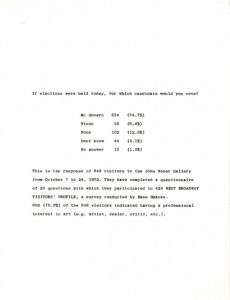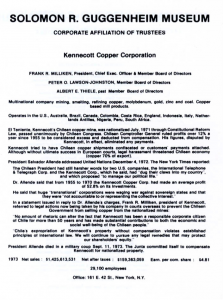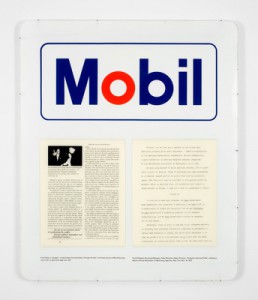An institutional critique of a major donor, governor of New York, and board member at MoMA, Nelson Rockefeller. Each visitor was given a ballot, with colors differing according to their status, and they would cast their votes on the particular question posed. Every evening the ballots were tallied and the number of boxes was entered on a chart next to them.
Hans Haacke
The Institutional Critic
Category: Institutional Critique (page 1 of 2)
Was a part of Haacke’s solo show at the Guggenheim and takes on the real-estate holdings of one of New York City’s biggest slum landlords, who was connected to Solomon R. Guggenheim. The work exposed, through meticulous documentation and photographs, the questionable transactions of Harry Shapolsky’s real-estate business between 1951 and 1971. His show was cancelled on the grounds of artistic impropriety by the museum’s director six weeks before the opening.
© 2024 Hans Haacke
Theme by Anders Noren — Up ↑
